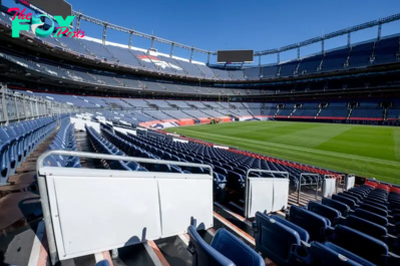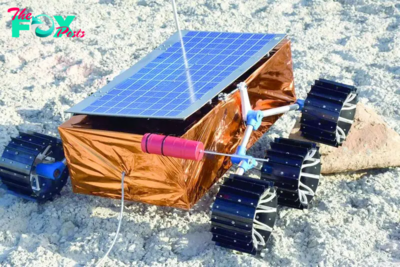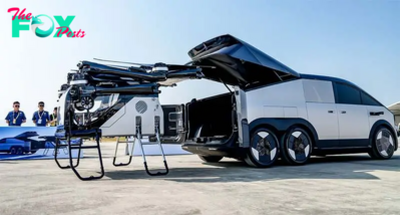Technology
DARPA's autonomous 'Manta Ray' drone can glide through ocean depths undetected
Engineers have assembled an autonomous underwater drone that the U.S. Defense Advanced Research Projects Agency (DARPA) plans to use for long-range missions in the ocean, pictures show.
Dubbed "Manta Ray," the drone is modeled after filter-feeding fish of the same name with diamond-shaped bodies and wing-like fins. The prototype, designed and built by the aerospace and defense company Northrop Grumman, is an extra-large glider capable of operating long-duration, payloaded missions without needing on-board human support and maintenance.
Once deployed, the drone could also save energy by anchoring itself to the seabed and hibernating in a low-power mode.
"I’m excited to repost one of the first pictures of Manta Ray fully assembled in our Annapolis facility," Todd Leavitt, the vice president of naval and oceanic systems at Northrop Grumman, wrote in a LinkedIn post resharing the company's announcement.
Related: Superfast drone fitted with new 'rotating detonation rocket engine' approaches the speed of sound
DARPA launched the Manta Ray program in 2020 to improve underwater vehicle design, including developing techniques to increase payload capacity and conserve energy. The agency initially selected three contractors — Northrop Grumman, Martin Defense Group LLC and Metron Inc. — but the latter dropped out in late 2021. Since then, Northrop Grumman and Martin Defense Group LLC have each developed unique prototypes of the drone for in-water demonstrations and testing.
—AI drone that could hunt and kill people built in just hours by scientist 'for a game'
—Waterproof e-gloves could one day help scuba divers communicate with the surface
—Watch Boston Dynamics' newest Atlas robot wake up in the creepiest way possible
Northrop GruMMAn's Manta Ray prototype integrates several unique features to support DARPA's vision of creating "strategic surprise," the company said on its website. These include autonomy, carrying capacity for equipment to support different missions, energy-saving functions and modularity — meaning the design can be taken apart and reassembled. The drone also fits into five standard shipping containers, meaning it can be transported and deployed worldwide.
-

 Technology14h ago
Technology14h agoGet chronic UTIs? Future treatments may add more bacteria to your bladder to beat back harmful microbes
-

 Technology16h ago
Technology16h ago2024’s final supermoon visible tonight in Pakistan | The Express Tribune
-

 Technology1d ago
Technology1d agoEU fines Meta €798 million for Facebook Marketplace's 'abusive practices' | The Express Tribune
-

 Technology1d ago
Technology1d agoSpain's 'La Vanguardia' exits X, citing rise in toxic content | The Express Tribune
-

 Technology1d ago
Technology1d agoThe Gap Between Open and Closed AI Models Might Be Shrinking. Here’s Why That Matters
-

 Technology1d ago
Technology1d agoDenver Broncos on verge of giving fans faster internet as it installs Wi-Fi 6E at stadium
-

 Technology1d ago
Technology1d agoSUPARCO's rover to explore lunar surface | The Express Tribune
-

 Technology2d ago
Technology2d agoXpeng Aeroht secures 2008 pre-orders for modular flying car at Airshow China | The Express Tribune



























